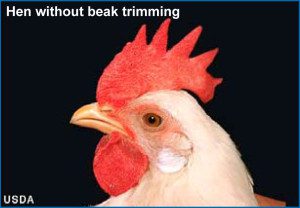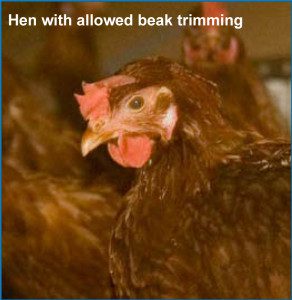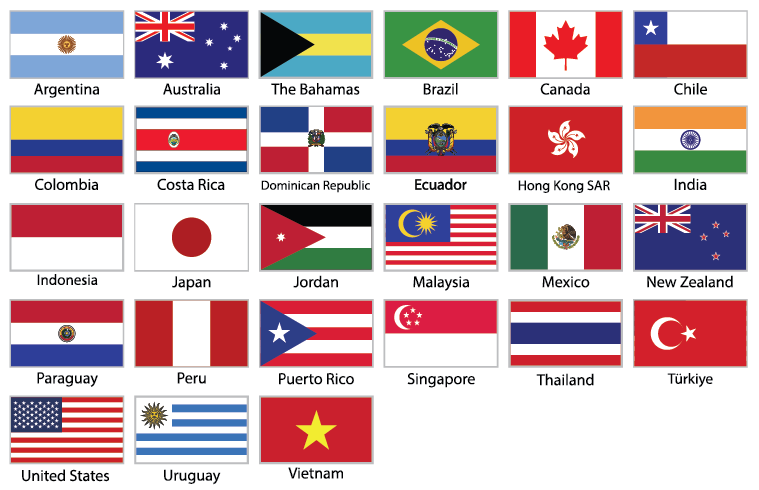Beak Trimming
HFAC is aware that there is some confusion regarding the difference between beak trimming and debeaking. We do not under any circumstances allow debeaking; there are, however, humane reasons to allow beak trimming of laying hens, as long as it is practiced according to strict guidelines.

Research shows that in flocks of over 60-120 birds, feather pecking may quickly affect a large proportion of the flock, causing significant pain and suffering.

HFAC allows minimal beak trimming in order to avoid heavy feather pecking and cannibalism among laying hen flocks. Feather pecking can occur in flocks of any size, and in any production system. Cannibalism is more common in large flocks (flocks of over 60-120 birds) but can also occur in flocks of any size. Cannibalism is more common in non-cage than cage systems. Our standards require that, if chicks are to be beak trimmed, the trimming must occur at 10 days of age or younger.
Further, the trimming can only be carried out by trained and competent operators using approved methods. Only the tip of the upper part of the beak may be removed in order to limit the hens’ ability to tear at flesh without inhibiting feeding, ground pecking, or preening. The lower mandible may be “stopped” (e.g., heat treated) without any beak being removed in order to avoid distortion of beak formation in later life.
HFAC is currently reviewing new research regarding possible improvements in beak-trimming methods. If these methods offer an even more humane and practicable alternative to our current requirements, we will amend the Animal Care Standards accordingly.




Beak Trimming
HFAC is aware that there is some confusion regarding the difference between beak trimming and debeaking. We do not under any circumstances allow debeaking; there are, however, humane reasons to allow beak trimming of laying hens, as long as it is practiced according to strict guidelines.
Research shows that in flocks of over 60-120 birds, feather pecking may quickly affect a large proportion of the flock, causing significant pain and suffering.
HFAC allows minimal beak trimming in order to avoid heavy feather pecking and cannibalism among laying hen flocks. Feather pecking can occur in flocks of any size, and in any production system. Cannibalism is more common in large flocks (flocks of over 60-120 birds) but can also occur in flocks of any size. Cannibalism is more common in non-cage than cage systems. Our standards require that, if chicks are to be beak trimmed, the trimming must occur at 10 days of age or younger.
Further, the trimming can only be carried out by trained and competent operators using approved methods. Only the tip of the upper part of the beak may be removed in order to limit the hens’ ability to tear at flesh without inhibiting feeding, ground pecking, or preening. The lower mandible may be “stopped” (e.g., heat treated) without any beak being removed in order to avoid distortion of beak formation in later life.
HFAC is currently reviewing new research regarding possible improvements in beak-trimming methods. If these methods offer an even more humane and practicable alternative to our current requirements, we will amend the Animal Care Standards accordingly.